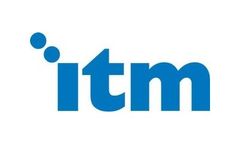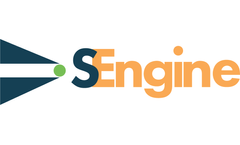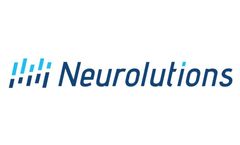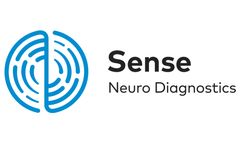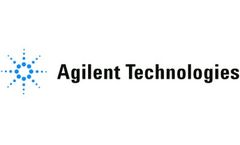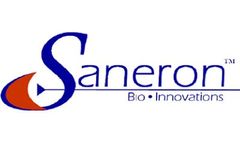Brain Cell Articles & Analysis
19 news found
” The Targeted Radionuclide Therapy with ITM-31 targets a specific protein (antigen) called CA XII, which is highly expressed on the cell surface of glioblastoma cells, but not found on healthy glial cells, a specific subpopulation of brain cells. ...
The primary efficacy endpoint was the composite of symptomatic ischemic stroke and covert brain infarcts detected by MRI and the primary safety endpoint was ISTH major bleeding and clinically relevant non-major bleeding. 1808 patients participated in the trial at 196 sites and 23 different countries. ...
ByBayer AG
Glioblastoma is a type of glioma, which is a brain tumor that begins in the star-shaped glial cells that surround and support nerve cells in the brain. ...
A team of scientists in Australia has taught a petri dish of brain cells to play Pong. According to an article from Input Magazine, “As Brett Kagan, chief scientific officer of Cortical Labs explains, these neurons are more than just a dumping of brain cells on a dish. ...
Using large reactors and special tools, hundreds of millions of high-quality astrocyte cells, the brain supporting cells that comprise AstroRx®, will be produced for the clinical trial, as well as for future commercialization purposes for the benefit of the hundreds of thousands of ALS patients worldwide. ...
It’s a scene that plays out daily in operating rooms around the world: a surgeon removes a malignant brain tumour. But rather than registering the satisfaction of having saved a patient’s life, hanging in the air is an all-too-real statistic; in 99.5% of these operations, unseen cancer cells remain. ...
Nearly 24,530 patients will be diagnosed with brain or other nervous system cancers in 2021 within the United States1, and for many of these patients, especially those with recurrent, metastatic, or rare disease, a treatment path is not clear. ...
The Neurolutions IpsiHand Upper Extremity Rehabilitation System (IpsiHand System) is a Brain-Computer-Interface (BCI) device that assists in rehabilitation for stroke patients with upper extremity—or hand, wrist and arm—disability. ...
If you need to be transferred from one hospital to the other, it can take hours while you’re losing about 2 million brain cells a minute… Time equals brain cells, and you don’t want any detours on the ...
Bruno Steinkraus, Ph.D. and colleagues at Hummingbird Diagnostics in Germany (up to $708,382 award) are developing a blood test that detects bloodborne microRNAs, molecules that help maintain the integrity of neurons in the brain and are surrogate markers of the immune system. Levels of microRNAs in the blood appear to be a reliable biomarker showing progression of ...
LAUR-401 is developed with Lauren Sciences breakthrough V-Smart™ nanotechnology platform, to cross blood brain barrier (BBB) and penetrate central nervous system (CNS) by non-invasive administration, designed for GBM, customized to encapsulate and deliver a known non-brain penetrant chemotherapeutic, and engineered to specifically target, and selectively ...
For example, researchers at the Gladstone Institutes in San Francisco received $5.9 million to develop a new way to help the more than five million Americans battling Alzheimer’s disease. They want to generate brain cells to replace those damaged by Alzheimer’s, using induced pluripotent stem cells (iPSCs) – an adult ...
Toward the end of each cycle, the body goes through rapid eye movement (REM), a crucial stage for repairing brain cells, DNA, and allows the brain to cleanse itself of waste that it produces during the day. ...
V-Smart™ for GBM will target and deliver a known chemotherapeutic that has proven potential to treat GBM, but does not cross the blood brain barrier (BBB) on its own, to GBM tumor cells. V-Smart™ Nanomedicines are designed to target and deliver therapeutics across the BBB and into selective brain cells both ...
Neurometabolomics is the set of biochemical reactions that rely on oxygen and glucose in order for the brain to perform its tasks. At the new center, scientists and researchers will analyze changes in the metabolic materials of brain cells and examine their impact on the body's physiological functions and behaviors. ...
While transplanted HUCBCs have been found to selectively migrate to the injured brain, past and recent research has discovered that few transplanted HUCBCs express neural cell characteristics, and few find their way to the ischemic region of the brain. ...
New findings in mice suggest that the timing when the neurotransmitter acetylcholine is released in the brain's hippocampus may play a key role in regulating the strength of nerve cell connections, called synapses. ...
New findings in mice suggest that the timing when the neurotransmitter acetylcholine is released in the brain's hippocampus may play a key role in regulating the strength of nerve cell connections, called synapses. ...
Using these methods, he went on to map a system across various areas of the brain that specialize in memory function. These maps of brain activity in healthy individuals form an understanding of the degeneration of brain cells in Alzheimer's. ...

